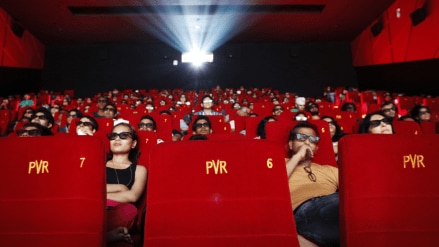Earlier in may, the Telangana Theatres Association decided it would shut down 450-odd single-screen cinemas in the state until the end of the month. In the absence of any good releases, footfalls had dwindled and, on some days, barely 10 people were watching a film.
Consequently, while ticket and food and beverage (F&B) sales were fetching them around Rs 4,000 a day, the cost of running the theatre was higher; according to a report in The Indian Express they were running up losses of close to Rs 7,000 a day.
The episode is ironic because Telugu-speaking audiences are the most prolific visitors to cinema theatres. According to Ormax Media, while the average number of films watched by “a theatre-going population” of 157 million in 2023 was six, Telugu audiences beat the average with nine films.
Largely because of the proliferation of multiplexes and also because there are more viewing options today on streaming platforms at affordable prices, single-screen theatres are in jeopardy of becoming a dying species. But it is not as though multiplexes themselves are doing roaring business.
The very ordinary quality of content being screened, the high prices of tickets, and poor marketing are the main reasons why audiences are not exactly flocking to the theatres. According to EY, cinema-goers these days wait for movie reviews before taking a call on whether to watch the film in a cinema or wait for an over-the-top (OTT) or television release.
This hurts exhibitors. At PVR Inox, footfalls in the March quarter went up by just 7% year-on-year while occupancy moderated to 22.6% from 25.3% in the December quarter. Box-office collections during this period were modest with only two films crossing Rs 200 crore — Fighter and Hanuman.
To be sure, the film industry had a good 2023 with the number of films released in the theatres going up by 11% to 1,796. Theatrical revenues were a strong Rs 12,600 crore on the back of blockbusters and mid-budget hits. However, the rise was driven by higher ticket prices because, according to EY, the footfalls fell by 9%. In recent months though, films have been short in number and on quality as seen in the many flops.
Producers and directors need to up their game and not just the budgets. They must ensure that films are worth the audience’s time and money by providing wholesome entertainment and a good theatrical experience.
There also needs to be a steady supply of movies to the theatres so that exhibitors are not short of content. Unfortunately, the releases come down to a trickle in some seasons such as April and May when the Indian Premier League cricket tournament is played. The exhibitors are, therefore, compelled to screen films in the theatres even though these may have moved to OTT platforms.
Some of these films —Laapataa Ladies for example—will have seen a 50-day run in the theatres without the box-office collections reflecting this. Again, EY estimates that on average, ticket prices went up by a sharp 20% in 2023 and that rates at multiplexes were more than twice that of rates in single-screen theatres. Even as they work to bolster revenues by improving the share of F&B sales — which accounted for about 32% of revenues in FY22-24, compared with just 27% in the FY17-19 period — bigger exhibitors must keep ticket prices affordable.
